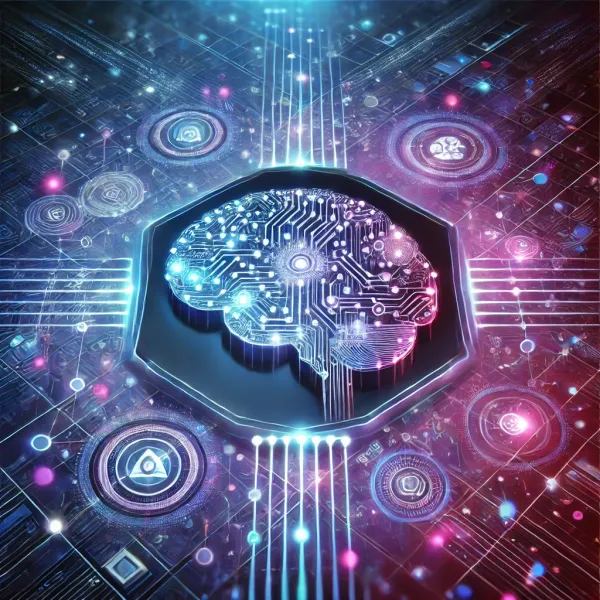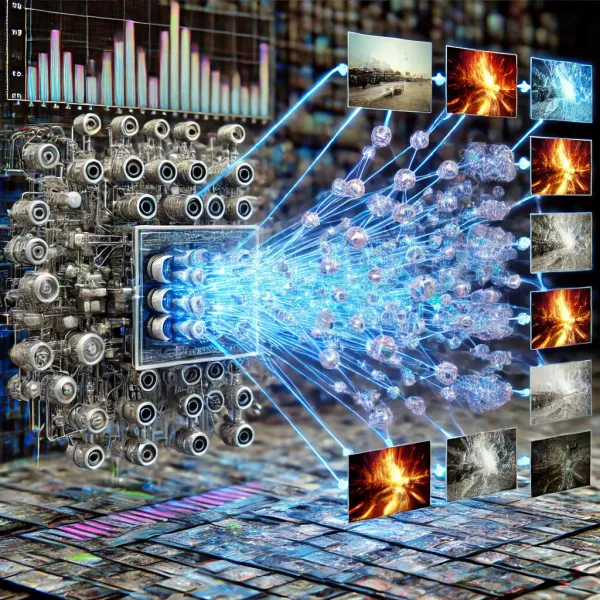Clean Architecture: Building Maintainable and Scalable Software Systems
Clean Architecture is a design approach that creates maintainable and scalable software systems. The key principle is that dependencies only point inward, ensuring core business logic remains independent of external concerns.

Introduction
In the ever-evolving world of software development, creating systems that are maintainable, scalable, and adaptable to change is crucial. One architectural approach that has gained significant traction in recent years is Clean Architecture. Proposed by Robert C. Martin (Uncle Bob), Clean Architecture provides a set of guidelines and principles that help developers create software systems with clear separation of concerns, making them easier to understand, test, and modify.
In this blog post, we'll dive deep into the concept of Clean Architecture, exploring its core principles, benefits, and how to implement it in your projects. Whether you're a seasoned developer or just starting your journey in software engineering, understanding and applying Clean Architecture can significantly improve the quality and longevity of your software systems.
What is Clean Architecture?
Clean Architecture is a software design philosophy that separates the elements of a design into ring levels. The main rule of Clean Architecture is that code dependencies can only move from the outer levels inward. Code on the inner layers can have no knowledge of functions on the outer layers. The variables, functions and classes (any entities) that exist in the outer layers can not be mentioned in the more inward levels. It is this rule that makes Clean Architecture work.
The architecture is divided into four main layers:
- Entities (Enterprise Business Rules)
- Use Cases (Application Business Rules)
- Interface Adapters
- Frameworks and Drivers
Let's explore each of these layers in detail.
Entities (Enterprise Business Rules)
At the core of Clean Architecture are the Entities. These represent your business objects and the core business logic. Entities encapsulate the most general and high-level rules of your application. They are the least likely to change when something external changes.
For example, in an e-commerce application, entities might include User, Product, and Order. These objects would contain critical business rules that are essential to the operation of the application, regardless of the database being used or the UI framework in place.
Use Cases (Application Business Rules)
The next layer consists of Use Cases, also known as Interactors. This layer contains application-specific business rules. It encapsulates and implements all of the use cases of the system. These use cases orchestrate the flow of data to and from the entities, and direct those entities to use their enterprise-wide business rules to achieve the goals of the use case.
Use cases are more likely to change than entities, as they are more specific to a particular application. However, they are still quite stable as they represent the core functionality of your system.
For instance, in our e-commerce example, use cases might include "Place Order", "Cancel Order", or "Update User Profile". These represent specific actions that can be performed within the application.
Interface Adapters
The third layer consists of Interface Adapters. This layer contains a set of adapters that convert data from the format most convenient for the use cases and entities, to the format most convenient for some external agency such as a database or the web. This is where you'll find implementations of your repositories, controllers, and presenters.
In this layer, you might have classes that implement repository interfaces defined in the Use Case layer, controllers that handle HTTP requests and responses, or presenters that format data for display in the UI.
Frameworks and Drivers
The outermost layer is composed of frameworks and tools such as the database, the web framework, external APIs, etc. This layer is where all the details go: the web, the database, the UI, external interfaces, devices, etc. This is the most volatile layer, as it's where we're most likely to see changes in technology and implementation details.
The Key Principles of Clean Architecture
- Independence of Frameworks: The architecture does not depend on the existence of some library of feature-laden software. This allows you to use such frameworks as tools, rather than forcing you to cram your system into their limited constraints.
- Testability: The business rules can be tested without the UI, database, web server, or any other external element.
- Independence of UI: The UI can change easily, without changing the rest of the system. A web UI could be replaced with a console UI, for example, without changing the business rules.
- Independence of Database: You can swap out Oracle or SQL Server, for Mongo, BigTable, CouchDB, or something else. Your business rules are not bound to the database.
- Independence of any external agency: In fact, your business rules don't know anything at all about the outside world.
Benefits of Clean Architecture
- Maintainability: By separating concerns and following the dependency rule, Clean Architecture makes systems easier to maintain. Changes in one layer don't necessarily affect others.
- Testability: The separation of concerns makes it easier to write unit tests for your business logic without needing to set up complex dependencies.
- Flexibility: Clean Architecture makes it easier to swap out components. For example, you could change your database or your UI framework without affecting your business logic.
- Independence: Your business logic is independent of your UI, database, and any external dependencies. This means you can delay decisions about these external factors.
- Scalability: Clean Architecture promotes modular design, making it easier to scale your application by adding new use cases or entities.
Implementing Clean Architecture
Now that we understand the principles and benefits of Clean Architecture, let's look at how we might implement it in practice. We'll use a simple example of a task management application to illustrate the concepts.
Entities Layer
First, let's define our core entity:
class Task:
def __init__(self, id: str, title: str, description: str, is_completed: bool = False):
self.id = id
self.title = title
self.description = description
self.is_completed = is_completed
def complete(self):
self.is_completed = True
def uncomplete(self):
self.is_completed = False
This Task entity encapsulates the core concept of a task in our application, along with some basic business rules (completing and uncompleting a task).
Use Cases Layer
Next, let's define a use case for creating a task:
from abc import ABC, abstractmethod
from uuid import uuid4
from entities import Task
class TaskRepository(ABC):
@abstractmethod
def save(self, task: Task):
pass
class CreateTaskUseCase:
def __init__(self, task_repository: TaskRepository):
self.task_repository = task_repository
def execute(self, title: str, description: str) -> Task:
task_id = str(uuid4())
task = Task(task_id, title, description)
self.task_repository.save(task)
return task
Here, we've defined an abstract TaskRepository interface and a CreateTaskUseCase that uses this repository to create and save a new task. Note that the use case doesn't know anything about how the task is actually saved - it just knows that it can call a save method on the repository.
Interface Adapters Layer
Now, let's implement the TaskRepository interface:
from entities import Task
from use_cases import TaskRepository
class InMemoryTaskRepository(TaskRepository):
def __init__(self):
self.tasks = {}
def save(self, task: Task):
self.tasks[task.id] = task
This InMemoryTaskRepository is a simple implementation that stores tasks in memory. In a real application, this might be replaced with a database-backed implementation.
We might also have a controller in this layer:
from use_cases import CreateTaskUseCase
class TaskController:
def __init__(self, create_task_use_case: CreateTaskUseCase):
self.create_task_use_case = create_task_use_case
def create_task(self, title: str, description: str):
task = self.create_task_use_case.execute(title, description)
return {
"id": task.id,
"title": task.title,
"description": task.description,
"is_completed": task.is_completed
}
This controller adapts the input from the outer layer (which might be HTTP requests, for example) to the format expected by the use case.
Frameworks and Drivers Layer
Finally, let's create a simple command-line interface to interact with our application:
from interface_adapters import TaskController, InMemoryTaskRepository
from use_cases import CreateTaskUseCase
def main():
repository = InMemoryTaskRepository()
use_case = CreateTaskUseCase(repository)
controller = TaskController(use_case)
while True:
title = input("Enter task title (or 'q' to quit): ")
if title.lower() == 'q':
break
description = input("Enter task description: ")
result = controller.create_task(title, description)
print(f"Created task: {result}")
if __name__ == "__main__":
main()
This simple CLI application brings together all the layers of our Clean Architecture. Note how easy it would be to replace this CLI with a web interface or even a mobile app - we'd just need to create a new component in the Frameworks and Drivers layer, without changing any of the inner layers.
Challenges and Considerations
While Clean Architecture offers many benefits, it's not without its challenges:
- Complexity: For small projects, Clean Architecture might introduce unnecessary complexity. It's important to consider the scale and requirements of your project before deciding to implement Clean Architecture.
- Learning Curve: Developers who are new to Clean Architecture might find it challenging to understand where different pieces of code should go.
- Overhead: Clean Architecture often requires writing more code upfront, which can slow down initial development. However, this investment often pays off in the long run through improved maintainability and flexibility.
- Performance: In some cases, the additional layers of abstraction might introduce some performance overhead. This is usually negligible, but it's something to be aware of for performance-critical applications.
Conclusion
Clean Architecture is a powerful approach to building software systems that are maintainable, testable, and flexible. By separating concerns and adhering to the dependency rule, Clean Architecture allows us to create systems that are resilient to change and easy to understand.
While it may require more upfront investment and introduce some complexity, the benefits of Clean Architecture often outweigh these costs, especially for larger, long-lived projects. It allows teams to work on different parts of the system independently, makes it easier to swap out external dependencies, and provides a clear structure for growing and evolving the system over time.
As with any architectural pattern, it's important to understand the principles behind Clean Architecture and apply them judiciously. Not every project needs the full Clean Architecture treatment, but understanding and selectively applying its principles can benefit projects of all sizes.
Remember, the goal of Clean Architecture is not to blindly follow a set of rules, but to create software that is easier to maintain, test, and evolve over time. By keeping this goal in mind and applying the principles of Clean Architecture thoughtfully, you can create robust, flexible software systems that stand the test of time.




